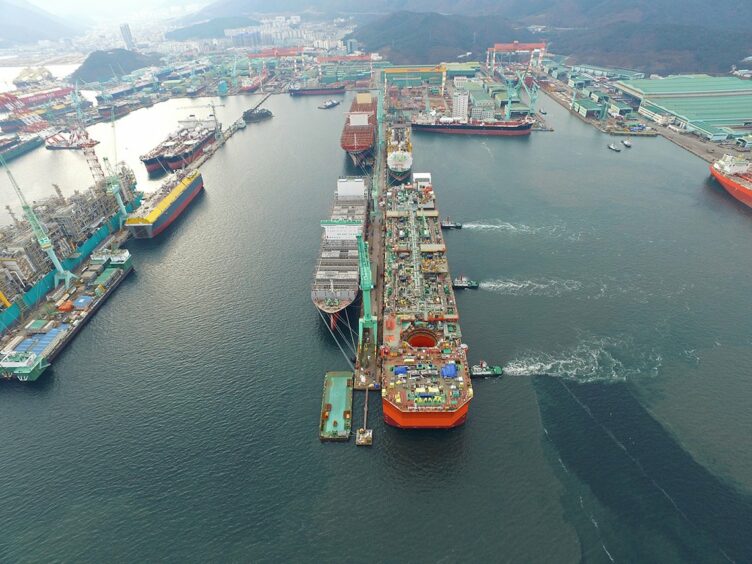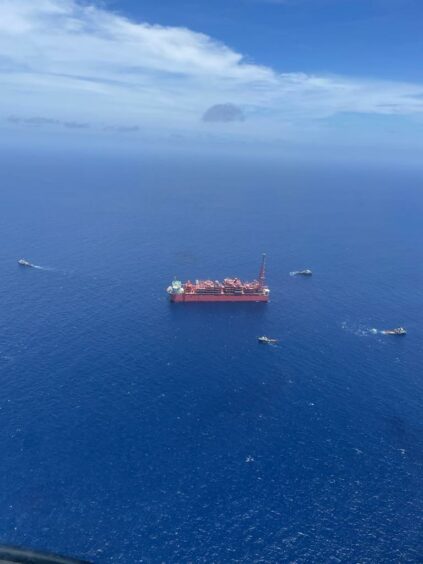
Eni and ExxonMobil have both confirmed the start up of the Coral Sul floating LNG (FLNG) project, offshore Mozambique.
In comments to Energy Voice, an Eni representative confirmed that LNG production had begun and that “first cargo is expected shortly”.
Eni said that it had begun producing gas from the reservoir to the FLNG facility in June. The Italian company expects Coral Sul to provide it with around 10,000 barrels of oil equivalent per day in 2022, rising to 28,000 boepd in 2023.
Exxon said the vessel began producing LNG earlier this month. This move, it said, contributes “new supply amid growing global demand”.
The FLNG vessel arrived offshore Mozambique in January. The operator hooked the vessel up to the six subsea production wells in May.
Coral Sul has capacity to produce 3.4 million tonnes per year of LNG and is drawing on a reserve of 450 billion cubic metres.
Speaking at Eni’s results, CEO Claudio Descalzi noted the importance of LNG – and the company’s growing involvement in the area.
“In the quarter we further enhanced our position in the gas supply chain via our exploration activities, the upstream acquisition of BP assets in Algeria and, on the midstream side, the purchase of the Tango FLNG liquefaction vessel as part of the Congo gas valorisation project,” Descalzi said.
While the Tango FLNG unit will be faster to start up, aiming for the second half of 2023, production is much lower than Coral Sul. Tango will be able to produce 0.6mn tpy from its proposed location on the Marine XII block.
Coral Sul cost $7 billion. European gas prices are substantially higher than last year, though, with Eni reporting the Italian hub price up 324% year on year.
Middleman, major moves
BP has contracted the entire output of Coral Sul, for 20 years. A vessel is currently loading, the British Sponsor.
A report from Welligence on the start of operations at the Mozambique project said BP was the “big winner”.
The company signed a free on board (FOB) contract with the Area 4 partners.
“Compared with more traditional fixed-destination contracts, bp can therefore respond to market conditions by supplying buyers of the greatest need (and with the strongest purchasing power),” Welligence analysts Derek Boulware and Marc Howson said.
They went on to say the contract was price was indexed to Brent. This likely makes “it highly profitable in the current very high LNG/gas price environment. BP also owns a lot of related LNG infrastructure, including LNG ships and regasification capacity access, which reduces the risk.”
The start of production from Coral Sul “heralds the start of what should be a large-scale ramp-up in LNG production from East Africa”, Welligence said.
Development in Tanzania has been stalled as a result of political challenges, while security risks onshore in Mozambique have put TotalEnergies’ plans on ice.
There are signs of change, though. Tanzania expects to sign a host government agreement (HGA) this year with the companies, with talk of a final investment decision (FID) by 2025.
Welligence expects the onshore 12.9mn tpy Mozambique LNG project to start up in 2027, with Exxon’s Rovuma LNG to follow in 2030. The report does include a proviso about security challenges, though.
However, the start of Coral Sul will do much to reassure the government – and investors – that FLNG can work. Eni and Exxon, the analysts said, are reassessing whether “further floating solutions could be economically feasible to avoid the potential violence in the northeast”.

 © Supplied by Technip Energies
© Supplied by Technip Energies